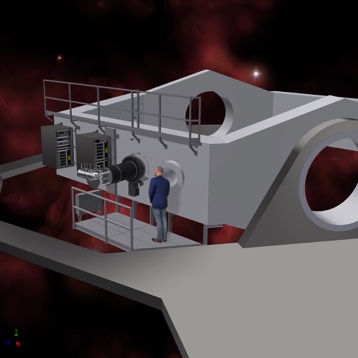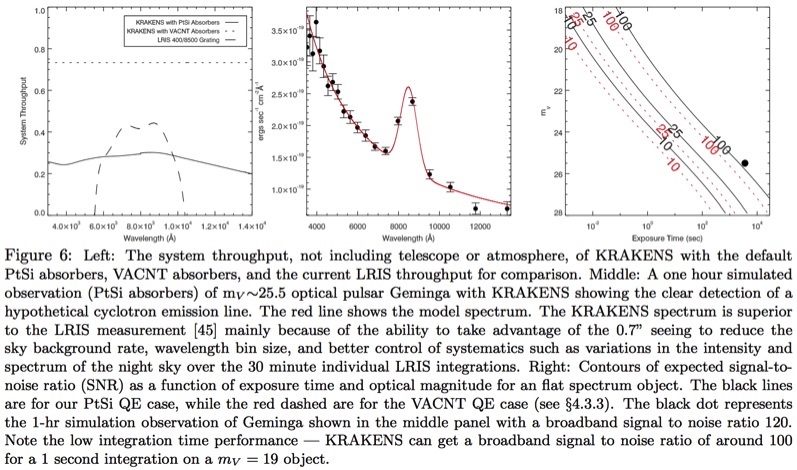The goal of the proposed KRAKENS instrument is to use MKIDs in a facility class instrument for the Keck I Telescope usable by a significant part of the broad astronomical community. This new instrument, the Keck Radiometer Array using KID ENergy Sensors (KRAKENS), will be a 30 kpix integral field spectrograph (IFS) with a 42.5”×45” field of view, extraordinarily wide wavelength coverage from 380–1350 nm, and a spectral resolution R=λ/∆λ > 20 at 400 nm. Future add on modules will enable polarimetry and higher spectral resolution. KRAKENS will be built using the same style MKID arrays, cryostat, and identical readout electronics to those used in the succesful 10 kpix DARKNESS instrument at Palomar and 20 kpix MEC instrument at Subaru, significantly reducing the technical risk.


KRAKENS on the Keck I Telescope will be an extraordinarily powerful tool for Astronomy, combining the largest telescope with the best detectors at the best site in the Northern Hemisphere. A significant part of the science impact will come from the inherent time domain capabilities of MKIDs. MKIDs have an effective readout rate (sub-ms) at least 104 times faster than any other science camera at Keck, allowing them to capture time domain information on rapidly changing sources like electromagnetic counterparts to LIGO sources, optical pulsars, and exoplanet transits. KRAKENS time domain capabilities are orthogonal to the current instrument suite at Keck which focuses on deep spectroscopy and high spatial resolution. In combination with the new NSF- funded Keck I deployable tertiary mirror, KRAKENS will open up fast time domain and cadence observations at Keck just as large synoptic surveys like ZTF and LSST come online. This synergy will result in ground-breaking science across a large number of disciplines.
KRAKENS will also be the most sensitive instrument on Keck for measuring the SEDs of faint low surface brightness objects. For these objects, like z > 8 galaxy candidates, the low spectral resolution is not a disadvantage since there are not enough photons for higher resolution spectroscopy. The high throughput of KRAKENS, combined with the lack of a slit, the ability to dynamically vary the software defined aperture based on atmospheric seeing, and do a software tip/tilt correction should make KRAKENS at least a magnitude more sensitive than LRIS.
KRAKENS will be available to the US user community through NASA’s competed share of the Keck telescopes, as well as to the UC, Caltech, and University of Hawaii communities. KRAKENS will be the first MKID instrument in the optical through near-IR wavelength range available to a significant fraction of the US community, and will be a key platform for US time domain science as well as familiarizing the community with this important new technology. There are very few instruments on large telescopes in the US that can do fast simultaneous multicolor observations. Three workshops will be held around the country to familiarize the community with KRAKENS’ capabilities and its data pipeline.
